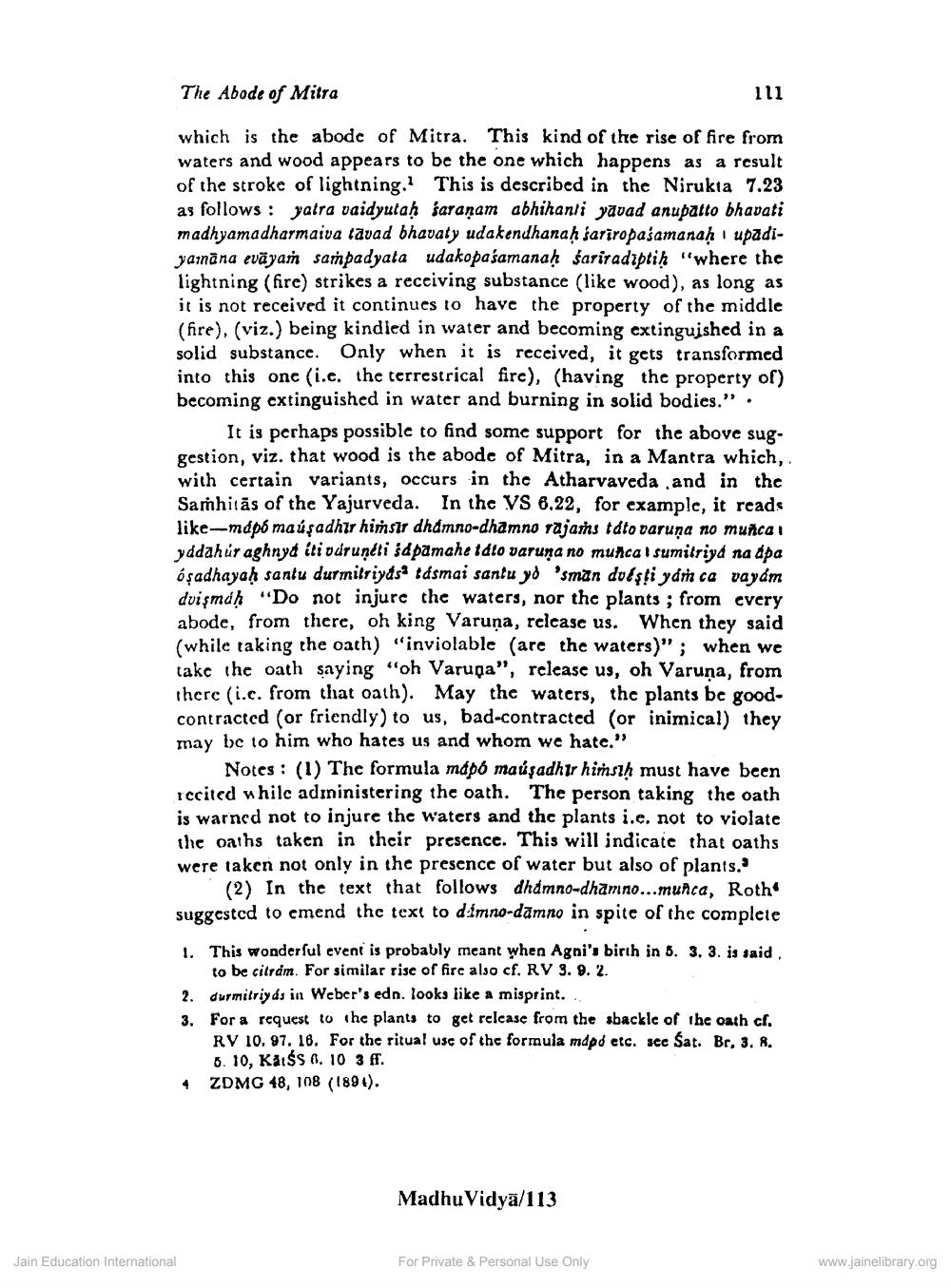________________
The Abode of Mitra
111
which is the abode of Mitra. This kind of the rise of fire from waters and wood appears to be the one which happens as a result of the stroke of lightning. This is described in the Nirukia 7.23 as follows: yatra vaidyutaḥ saranam abhihanli yavad anupatto bhavati madhyamadharmaiva lavad bhavaty udakendhanah sariropašamanah upadiyamana evayan sampadyata udakopaśamanaḥ sariradiptih "where the lightning (fire) strikes a receiving substance (like wood), as long as it is not received it continues to have the property of the middle (fire), (viz.) being kindled in water and becoming extinguished in a solid substance. Only when it is received, it gets transformed into this one (i.e. the terrestrical fire), (having the property of) becoming extinguished in water and burning in solid bodies.” .
It is perhaps possible to find some support for the above suggestion, viz. that wood is the abode of Mitra, in a Mantra which, with certain variants, occurs in the Atharvaveda and in the Samhitãs of the Yajurveda. In the VS 6.22, for example, it reads like-mdpó maúşadhir himsir dhamno-dhamno rajans tdto varuņa no munca i yddahúr aghnyt iti várunéti śdpamahe idlo varuņa no munca l sumitriyá na dpa ósadhayah santu durmitriydsa tasmai santu yd 'sman duéşti yam ca vayam dvismáh "Do not injure the waters, nor the plants; from every abode, from there, oh king Varuna, relcasc us. When they said (while taking the oath) "inviolable (are the waters)"; when we take the oath saying "oh Varupa", release us, oh Varuņa, from there (i.c. from that oath). May the waters, the plants be goodcontracted (or friendly) to us, bad-contracted (or inimical) they may bc to him who hates us and whom we hate."
Notes: (1) The formula mapó maúşadhir himsih must have been recited while administering the oath. The person taking the oath is warned not to injure the waters and the plants i.e. not to violate the oaths taken in their presence. This will indicate that oaths were taken not only in the presence of water but also of plants."
(2) In the text that follows dhamno-dhamno...munca, Roth suggested to emend the text to dámno-damno in spite of the complete
This wonderful event is probably meant when Agni's birth in 3. 3. 3. is said.
to be citrdm. For similar risc of fire also cf. RV 3. 9. 2. 2. durmitriyds in Weber's edn. looks like a misprint... 3. For a request to the plants to get release from the sbacklc of the oath cl.
RV 10. 97. 16. For the ritual use of the formula mdpd etc. scc Sat. Br. 3. 8.
6. 10, Kåt $S . 10 3 ff. 4 ZDMG 48, 108 (1896).
Madhu Vidyā/113
Jain Education International
For Private & Personal Use Only
www.jainelibrary.org




